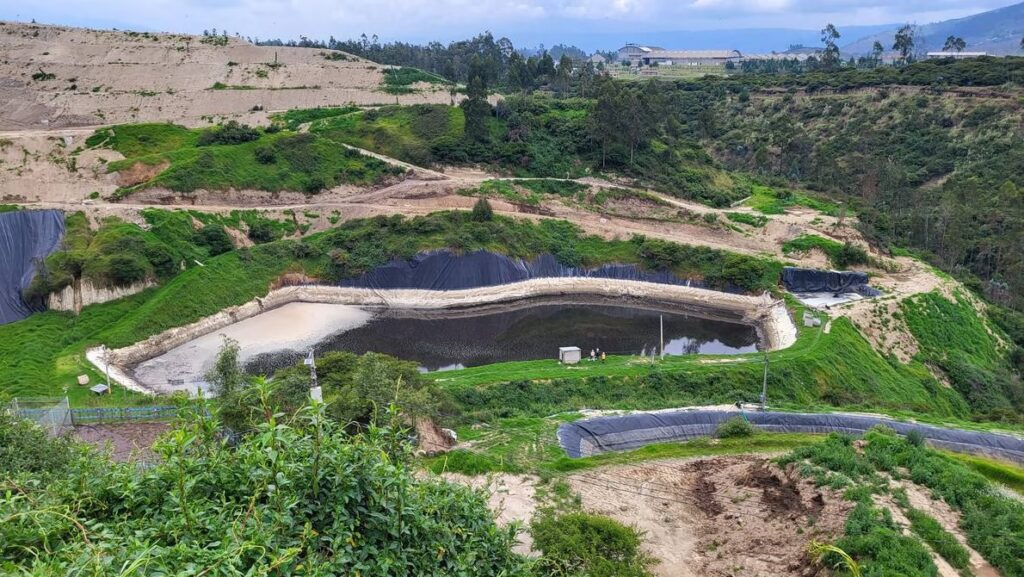Inspenet, April 30, 2023
Quito, capital of the Republic of Ecuador, produces more than 2,000 tons of garbage every day. The waste that reaches the El Inga sanitary landfill, in the parish of Pifo, undergoes a special process for its disposal and decomposition, which is why it ends up being converted into electricity.
In the buckets, extensions of land where the garbage is disposed, the Metropolitan Public Company for Integral Management of Solid Waste (Emgirs) has a chain of pipes that transports the liquids and gases that emerge from the masses of waste.
Santiago Vargas, Emgirs operations manager, explained that, unlike a waste dump, a sanitary landfill is made up of concrete structures and pipes at the bottom to filter solid and liquid material.
On the pipes that carry the liquid waste there are vertical pipes or concrete chimneys that are in charge of emanating the biogas that emerges from the decomposing garbage.
This biogas was released into the environment, a part still has that destination, but the vast majority is used as renewable energy.
Through pipes it is sent to a station that converts this element into electrical energy, it is transported by a system of poles through which it is integrated into the country’s electrical energy network.
Authorities assured that this use of biogas benefits different neighborhoods of the Metropolitan District of Quito (DMQ).

What are leachates and how are they treated at the El Inga de Quito sanitary landfill?
The leachate is the result of the decomposition of organic waste. Santiago Vargas pointed out that this component is treated under the environmental regulations that govern the country, processing and converting it into water used for irrigation of fields.
The leachate or liquid waste descends to the earth and ends in 13 pools that make up the place. These pools, which were previously part of a dispute between the communities surrounding the landfill, the Ministry of the Environment, and Emgirs, are now going through a relocation process, because where one of the pools that leaked in the past was located, now the construction of a large bucket.
Quito is committed to the construction of an environmental complex for sustainable waste management
The Municipality of Quito plans the construction of bucket 11 in the El Inga sanitary landfill. The work that is in the bidding process will have an investment of USD 4,000,000.
“It includes a superstructure that will contain solid waste. It will be the final bucket of the sanitary landfill which will mark the useful life of the waste” explained Santiago Vargas.
The construction process will take a year and will allow the deposit of filled garbage, one and a half more years of disposal. In 12 hectares of land, this bucket will be the largest of the entire sanitary landfill.
While this space is being built, it is intended to build a temporary bucket, also part of disputes due to its proximity to liquefied petroleum gas (LPG) bottling companies.
The new administration of the mayor-elect, Pabel Muñoz, must define the place where the new Environmental Complex will be built, which will come into operation once El Inga concludes its useful life, a task that the current administration did not define, but which they assured will be advanced .
Photo : Andres Salazar
Don’t miss the Inspenet News at: https://inspenet.com/inspenet-tv/

